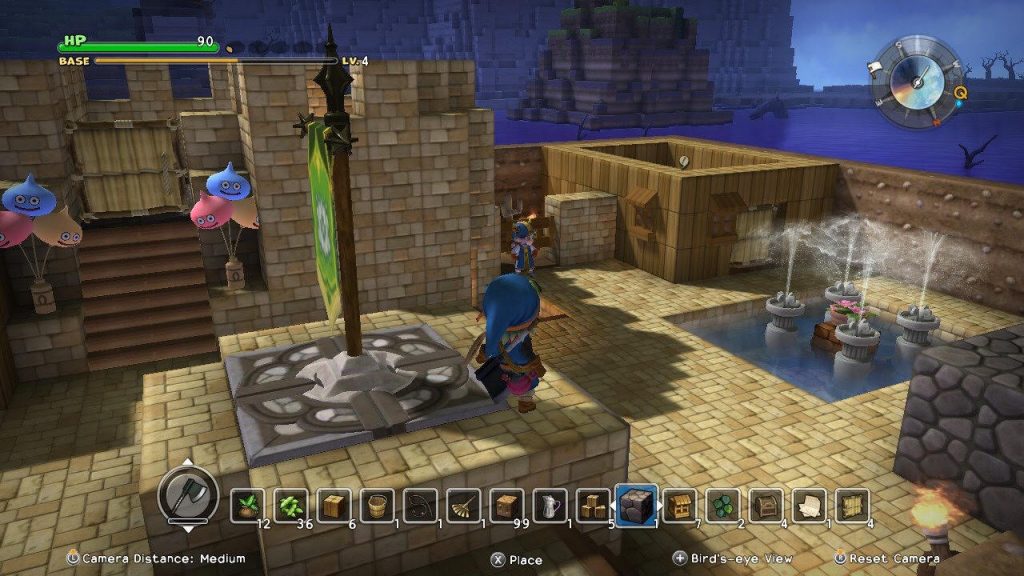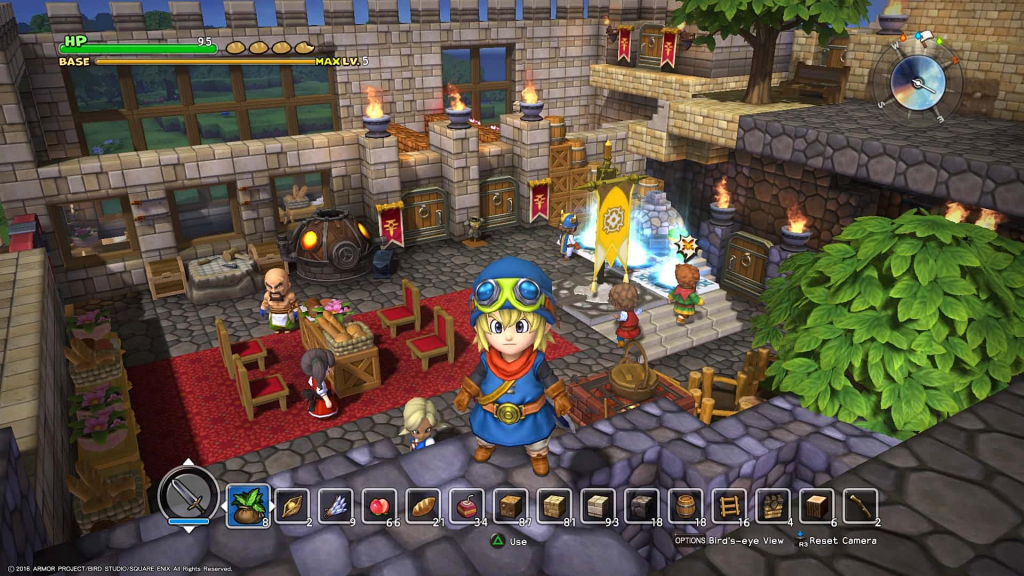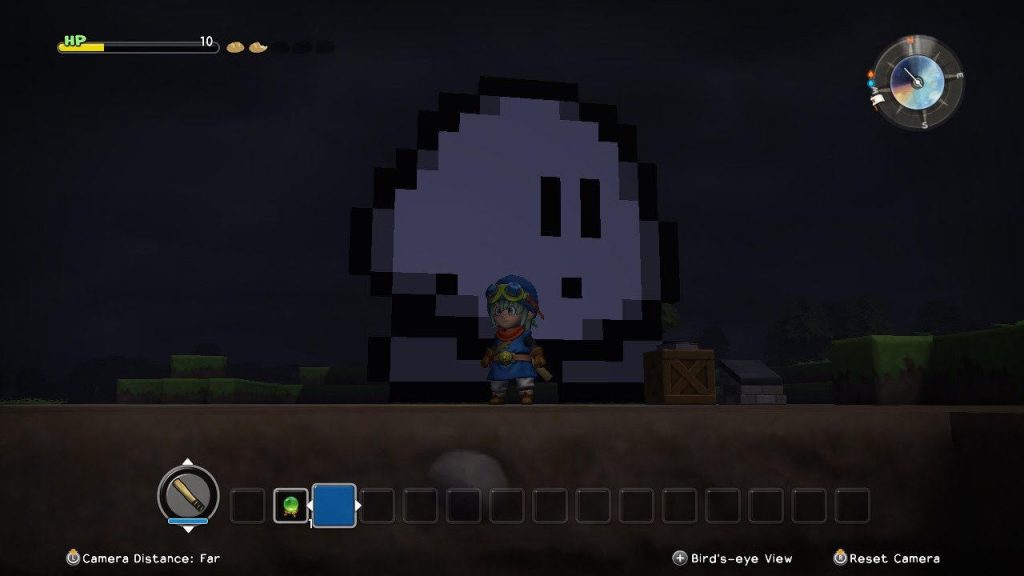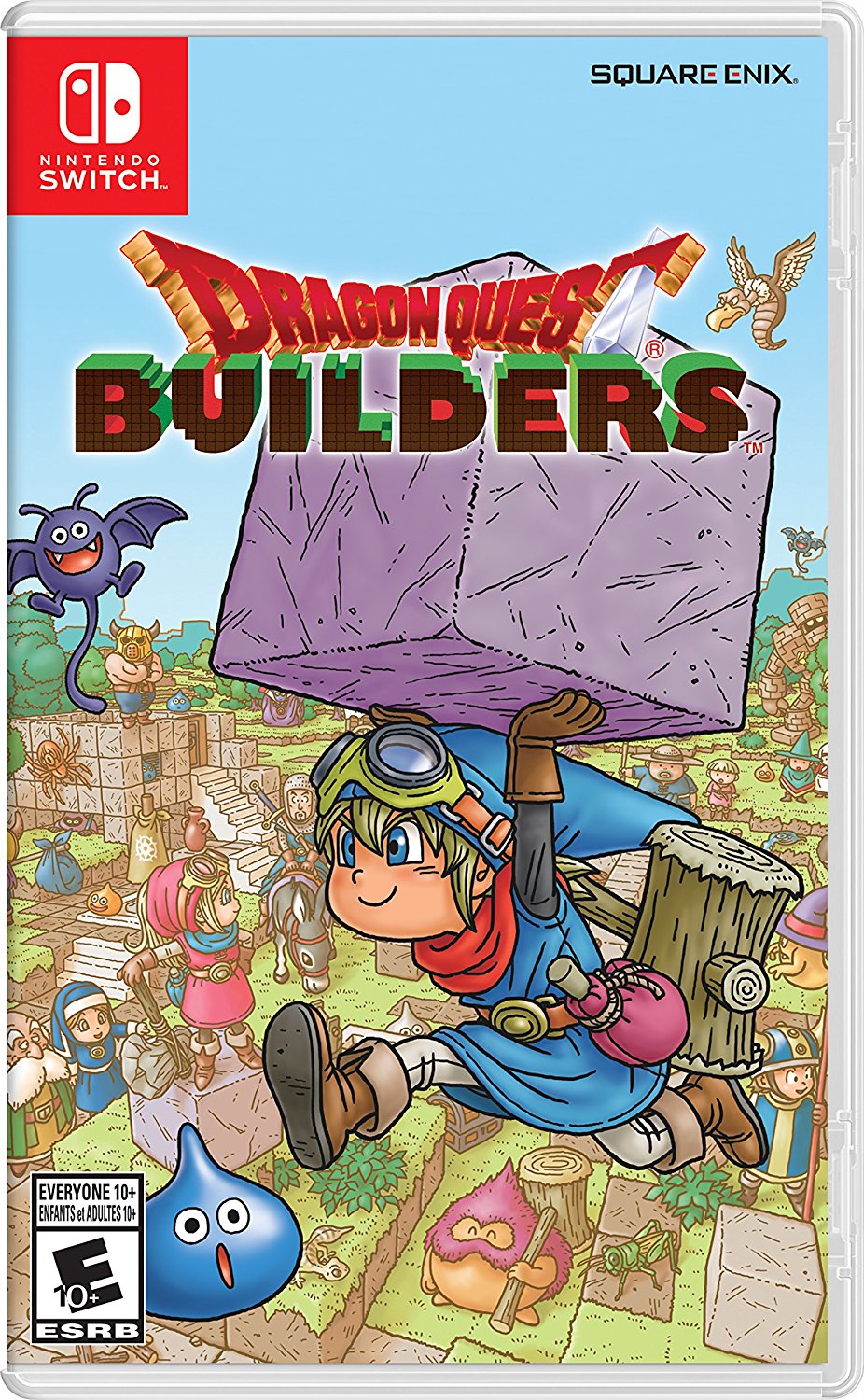It takes something really special to overpower any preconceived notions about a game’s genre and get me hooked on it. At face value, Dragon Quest Builders looks like a Minecraft rip-off covered in Dragon Quest’s timeless and charming art style. However, the game shirks off any notion that it’s just cashing in on the “builder-game” craze very quickly.
Rather than an open sandbox without any goals, Dragon Quest Builders walks you through learning to build in this world with quests. At the start of the first chapter, the game immediately directs you to the ruins of a small city, where you must fix the ruined buildings to attract residents. These residents will give you quests to fulfill, asking you to explore the world of Alefgard and collect materials to use to rebuild the town of Cantlin back to its former glory. As you restore the town, residents will move in, asking you to build different varieties of rooms and crafting stations. Monsters will also take notice of the growing town, attacking it nightly and gathering for larger onslaughts as part of the quest line, which makes building up walls and defenses around the town crucial.
After the quests for the chapter have run their course and the town is fully restored, you are free to explore and build as you please within the areas you’ve discovered, but you can also move onto the next chapter. This means leaving Cantlin and its residents, as well as all of your supplies, equipment, and most of your recipes behind — which is incredibly jarring at first, especially when you’ve spent hours and hours perfecting the town and weren’t expecting to have to leave it. Fear not, however, as every chapter has its five individual save slots, allowing you to return to any of them as you see fit after they’ve been completed. You can even go back and rebuild in a different manner, leaving your original vision for each town untouched.

Inviting Adventuring and Compelling Creations
Dragon Quest Builders is infinitely more charming than Minecraft ever has been or will be, and that’s a huge relief. I’ve been able to play for hours on end without once feeling bored. If I ever lost the drive to build and improve my town — which honestly didn’t happen often anyway — there was always a quest or two waiting for me, to drive me along like a traditional RPG would. The story won’t be winning any awards, but I’d be lying if I said I didn’t love a lot of these characters; plus there were plenty of lines of dialogue that had me literally laughing out loud.
If I was ever content with the points I’d reached in the main story, my town was always there with something to improve or add, and it could all be done my way. The way DQ Builders defines what constitutes a building — walls that are two blocks high, a door, and a light source — is extremely helpful in guiding your creativity at first, and there are countless options you can work with inside of the somewhat loose guidelines. Certain types of buildings require amenities inside in order for the game to classify them differently, and finding these “building recipes” by accident was always a delight. Some villagers will request certain rooms be built, often providing you with an exact blueprint to follow. These blueprints will almost always provide you with a new type of building, and as soon as you construct the building exactly as the blueprint specifies, you can tweak the building to your needs, or get rid of it completely if you’d rather not have it around. Crafting items is a breeze as well, and finding most raw materials will immediately provide you with several recipes that can be used — from standard “builder” fare like torches, beds, and brick walls, to out-of-the-blue concoctions like fries, Slime balloons, and the curiously-named Naughty Night Light.

One of my favorite tweaks in the Minecraft formula comes pretty early on the first chapter, where you learn to construct a Colossal Coffer, a giant chest which essentially gives you massive pockets. If your inventory is full when you’re out collecting materials, they’ll just head straight there with no fuss. Plus the Coffer is accessible at any time right from the menu, making inventory management a breeze and allowing you to play the game without having to worry about managing what you do or don’t have on you. The only inventory-related issue I’ve had was the fact that it is impossible to use the control sticks in menus, forcing you to rely on the D-pad to scroll through options and your inventory. Muscle memory kicked in pretty quickly after I learned the controls, so it didn’t really cause any problems for me, but it’s a weird design choice nonetheless.
The Hills are Alive with the Sound of… Construction?
The music in Dragon Quest Builders is also incredibly soothing and easy to listen to while playing — and at the same time, it’s still presenting itself as grand and adventurous background music. The differences between the music inside the town (which is the perfect soundtrack for building) versus out in the wild (where it’s made to feel like a more robust traveling tune) are pronounced and well-executed, and the differences between daytime and nighttime music are just as well done. Walking on, placing, and destroying different types of blocks produce different sounds, which is a small touch that just feels so natural and immersive, and it really adds to the overall charm of the game. My only gripe with the sounds are the constantly whining crickets during the nights, but after a few hours of play I had tuned them out completely.
Your World, Your Way
The main game is long; after about 25 hours of play I was just coming to the end of chapter two — but if we’re being honest, I hardly noticed how long it took. Apart from the four chapters, there’s a “free build” mode, titled Terra Incognita. Unlocked after the first chapter, this mode is set apart from the other lands you’d explore in the main game: here you can build to your heart’s content. You could make a massive city, countless castles, or really any number of odd things. Materials are easy to come by in Terra Incognita, and you’re encouraged to let your imagination run wild.
Speaking of running, the Switch version of Dragon Quest Builders has an exclusive mount available in Terra Incognita, and it’s a blast to ride, so make sure to explore this mode so you don’t miss out. Terra Incognita also offers the game’s only online features, allowing you to upload your creations for other players to view in their Terra Incognita. If you’d like to take a look at what your fellow builders are constructing, all you need to do is place a summoning stone on the ground, and the buildings they’ve chosen to share will automatically populate within the stone’s field. I highly recommend doing this, since it may give you plenty of ideas for your own creations — and you also might just come across a breathtaking piece of art.

Building a Home in my Heart
The Switch is the perfect home for Dragon Quest Builders, and this flawless port was definitely worth the wait. The game looks great both docked and in handheld mode, and the portability is a definite plus, which is true for just about any Switch game. It’s worth mentioning here only because I spent almost every available minute of my day playing this game over the last week, which was only possible thanks to the Switch’s portability.
I honestly cannot give the game enough praise — Square Enix knocked it out of the park when it decided to bring it to the Switch, and it has definitely skyrocketed to my favorite third party Switch title yet. I’m excited to see what the sequel brings, provided it comes out in the West, but for now I’m going to build my little Builder heart out.
Leave a Comment
System: Nintendo Switch
Release Date: February 9, 2018
Categories: Role-Playing, Action, Adventure
Publisher: Nintendo
Developer: Square Enix


